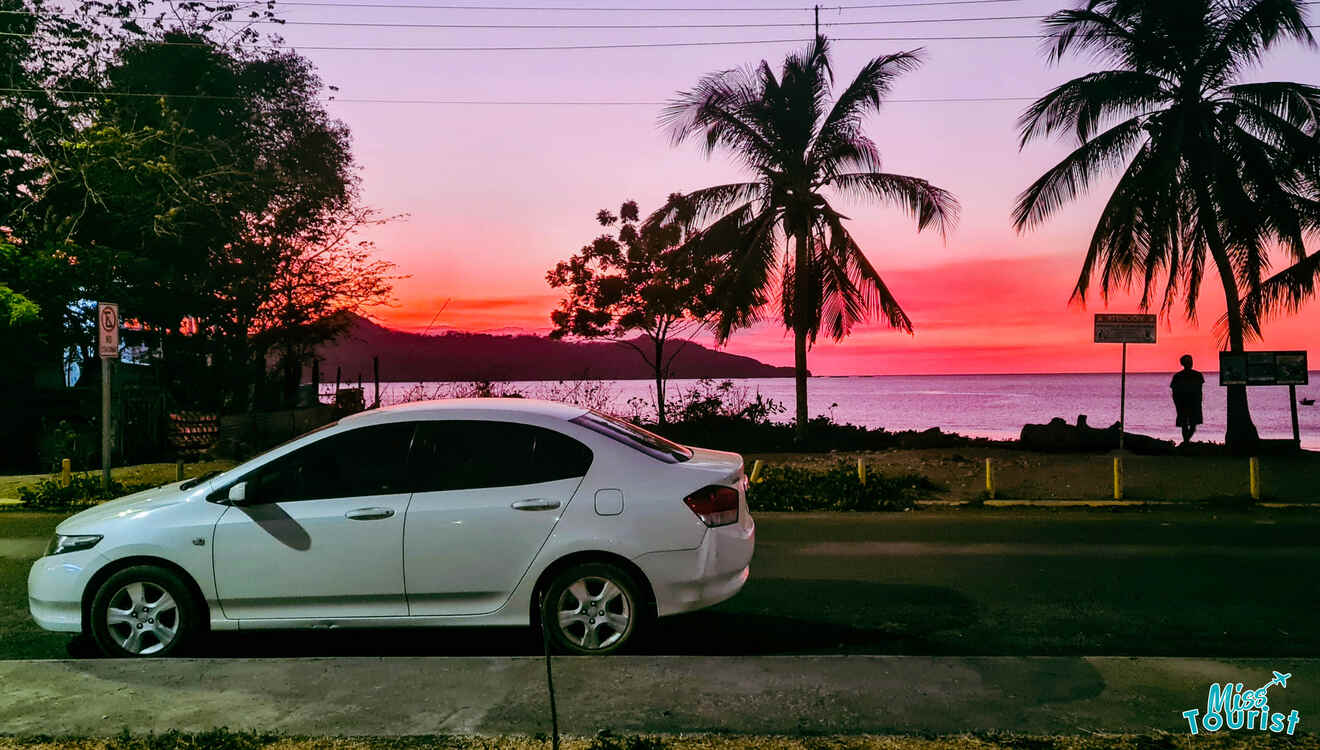
You’re about to embark on a trip to Costa Rica, and the idea of renting a car has crossed your mind. Great!
There are plenty of reasons why you’ve thought of this, some of which being that public transportation is non-existent in most places and you are so much more flexible when you have your own car.
As a person who has lived in Costa Rica for some time, I can assure you that renting a car in Costa Rica brings up a completely different experience, trust me! I am not even talking about maximizing your vacation time here 🙂
Renting a car in Costa Rica from different companies, I collected some valuable advice for you that I’ll share in this post. You will find out how much it should cost to rent a car, which type is the cheapest/best, how to deal with insurance in this country and other rules you should be aware of!
Before we start, I want to point out how important it is to book your cars in advance, as the most popular car models tend to rent out months in advance.
Now, let’s start from the basics, shall we?
| Age | 21 (young surcharge for those 21 – 24 y.o.) |
| Documents needed | Passport, driving license |
| Driving license requirements | In Roman alphabet, no international license needed |
| Speed limit | 90 kph on a highway, 40 kph in a city |
| Which side of the road | Right |
| Children rules | Children under 12 y.o. (79 lb/39 kg) – car seat/booster seat mandatory |
| Alcohol allowed | BAC less than 0.05% |
| Metric or imperial system | Metric (speed in kph, gas in lt) |
| Where to book | Click here for the lowest price |
1. Car prices & choosing the best car for you
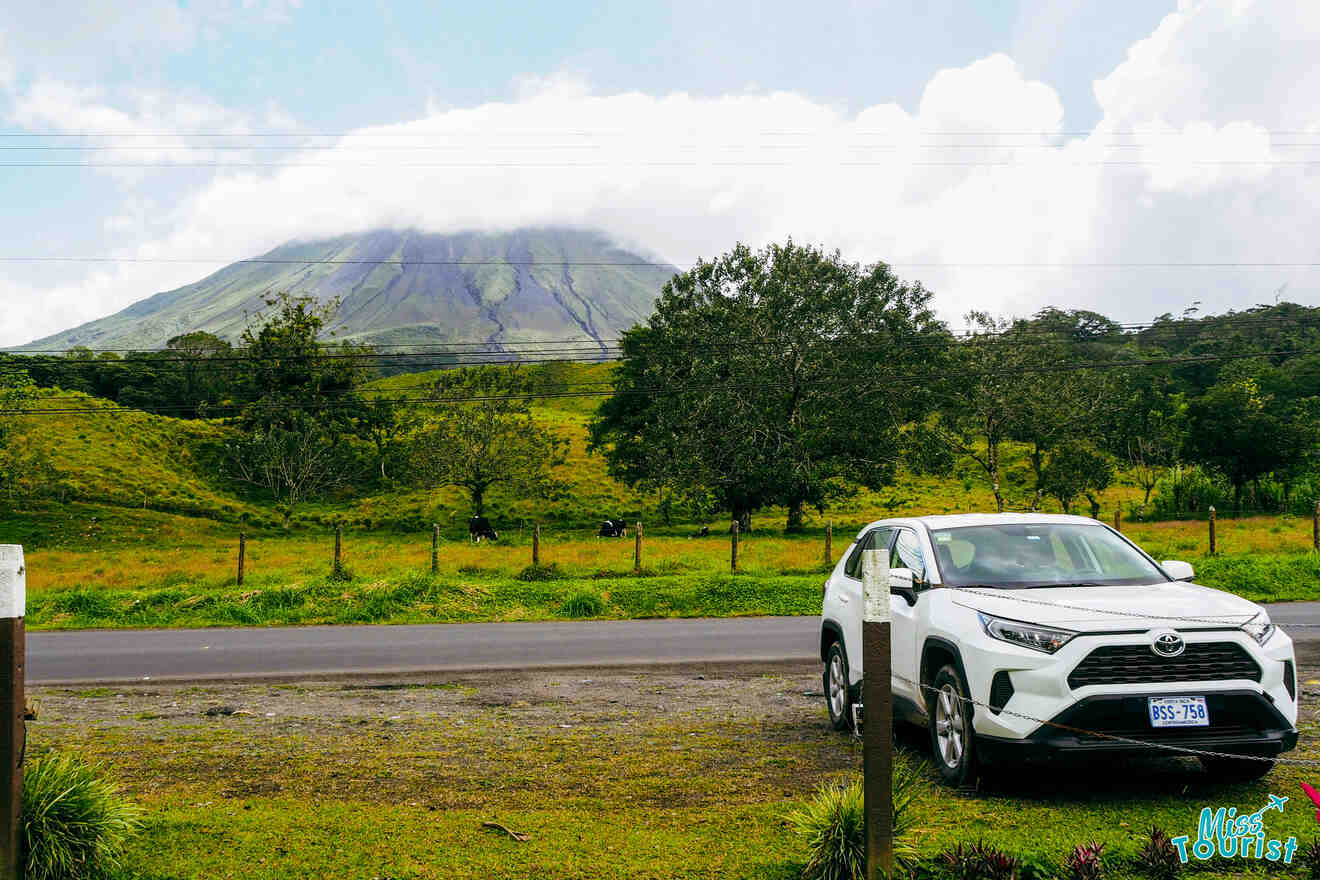
Depending on the seasons, car rental prices in Costa Rica will vary. This shouldn’t come as a surprise as prices in popular tourist destinations are obviously dependent on the seasons, i.e., the high season (when most tourists come) and the off-season (when barely any tourists visit the places).
1.1 Prices by season
Below, we are going to talk about prices in detail, but you should know that the prices vary a LOT depending on the season (we will compare all prices). The high season is anywhere between December and April + July. The off-season is May, June, and from August to November.
1.2 Prices by car type
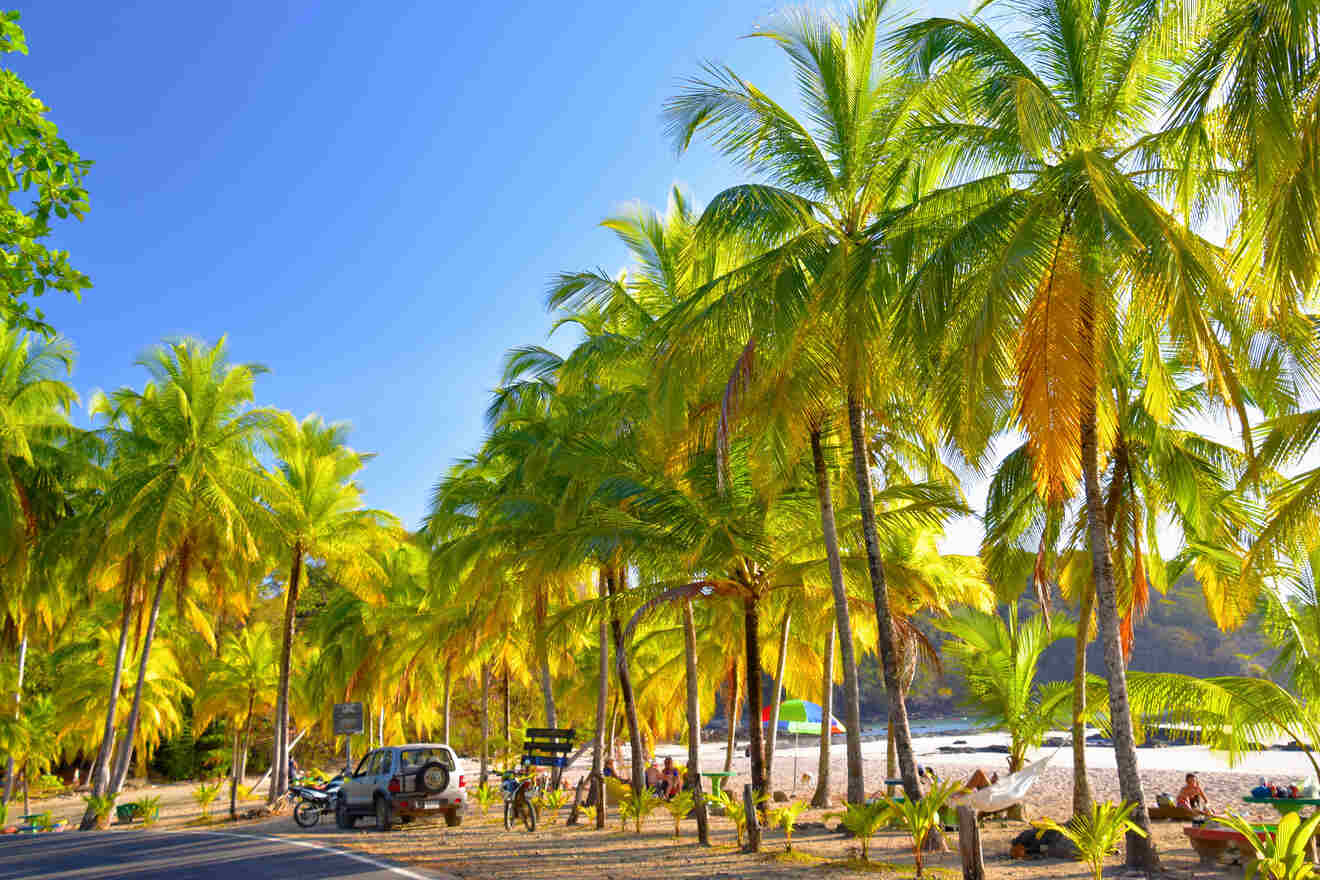
For the table below, I compared several websites and went until the end of the buying cycle to see the real price you would actually pay.
If a blinky ad tells you the rate is US$35 (CRC 18,900) per day, do not rush to book it yet, this is just the base rate, and the mandatory insurance will double the price.
NOTE: Also, please keep in mind that you HAVE TO book way in advance because lots of car models will simply be unavailable if you book 1 month in advance during a high season.
| Type (price per day) | Low season/High season price (very basic insurance) |
Low season/High season price (mandatory insurance) |
Low season/High season price (full insurance) |
|---|---|---|---|
| Sedan | US$45/65 | US$60/80 | US$85/100 |
| 4×4 | US$65/125 | US$85/145 | US$110/160 |
| Minivan | US$85/170 | US$95/175 | US$120/195 |
The prices you see in the table are the actual prices you are going to pay. As I said, I personally did research on many companies and many dates. If you see something for US$10 (CRC 5,370) a day on Kayak, Expedia, etc., that is because they are hiding lots of obligatory fees (insurance, deposit, taxes, etc.), so be careful!
I am going to explain the insurance a bit later in the text, but for now, just trust me on this: it is either mandatory insurance (Column 3) or full insurance (Column 4).
MY EXPERIENCE: We got a 4×4 at Rentalcars, which was US$1,150 (CRC 617,260) per week for 2 drivers and full insurance. For US$164 (CRC 88,030) per day, we actually considered it a pretty good deal for what we got. 🙂
1.3 How to choose the type of car that is perfect for you?
Depending on what your plans for the trip are, here are the most popular car models in Costa Rica:
- City/Beach hopping: Hyundai I10 pr Accent or Toyota Yaris.
- Adventures: Toyota Rav4, Nissan Rogue, or Mitsubishi ASX
- Big family trip: Mitsubishi Montero Sport, Toyota Prado, or Hyundai H1
- VERY big family/group (9 – 12 people): Hyundai H1
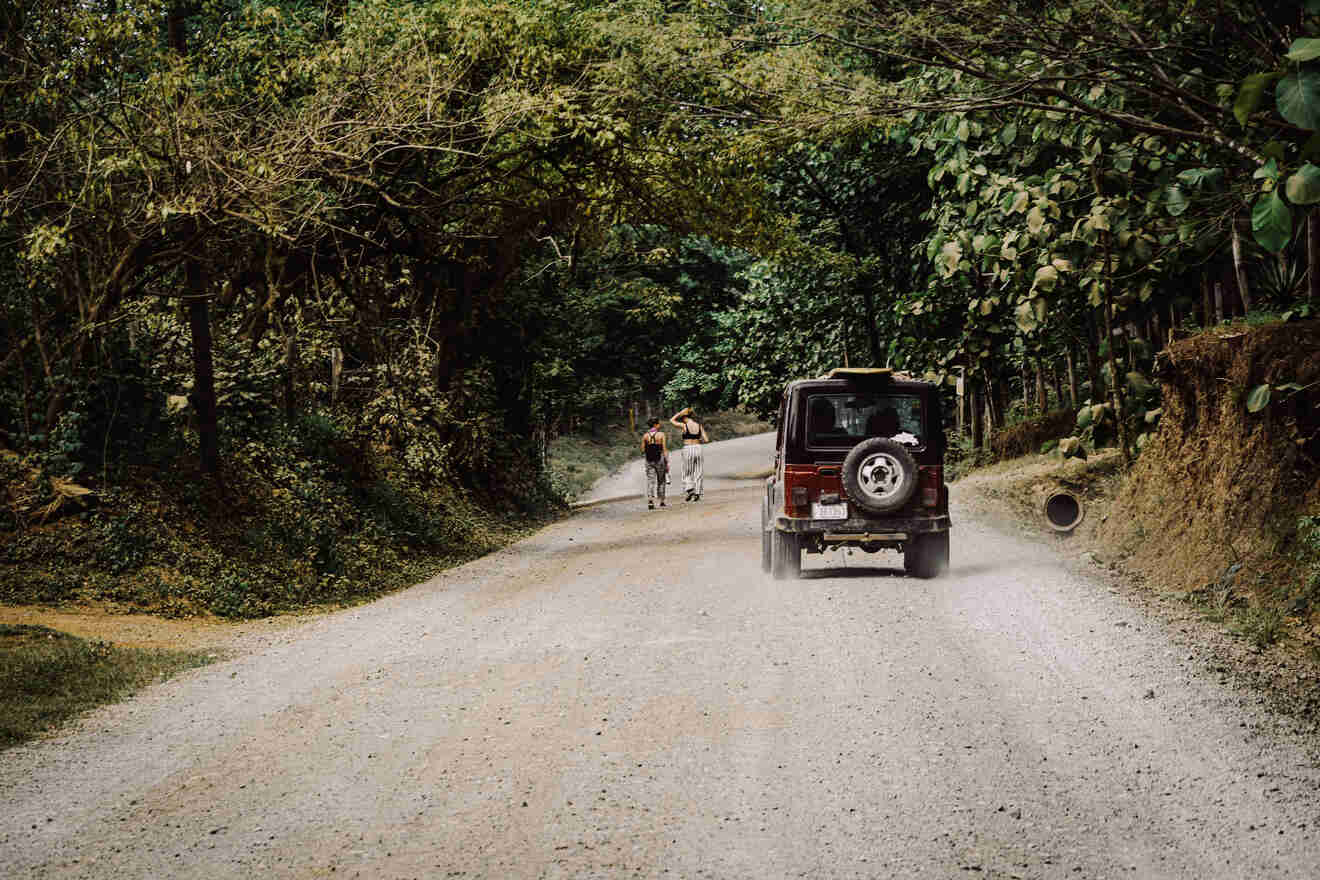
PRO TIP: I do NOT recommend getting a car with a very low engine. Chances are you are going to go on some mountain roads (they have a lot of those!), and with a small engine, it will be very hard to overtake, have A/C on, etc.
Please remember that you will only need a 4×4 only in some particular places, not everywhere. While you do need a powerful car that can climb mountains and overtake tracks, in my experience, the 4×4 is not exactly necessary if you are going to main tourist destinations and will take tours from there.
Since the price for a 4×4 is almost always double the price of a normal car, I would just recommend staying away from very off-road places for budget-conscious travelers. For instance, Arenal has some unpaved roads, but it is not all that bad (see the ultimate list of 30 amazing hotels there if you fancy staying). Just check that your hotel also has a paved road to it, otherwise, it would be hard to get there indeed.
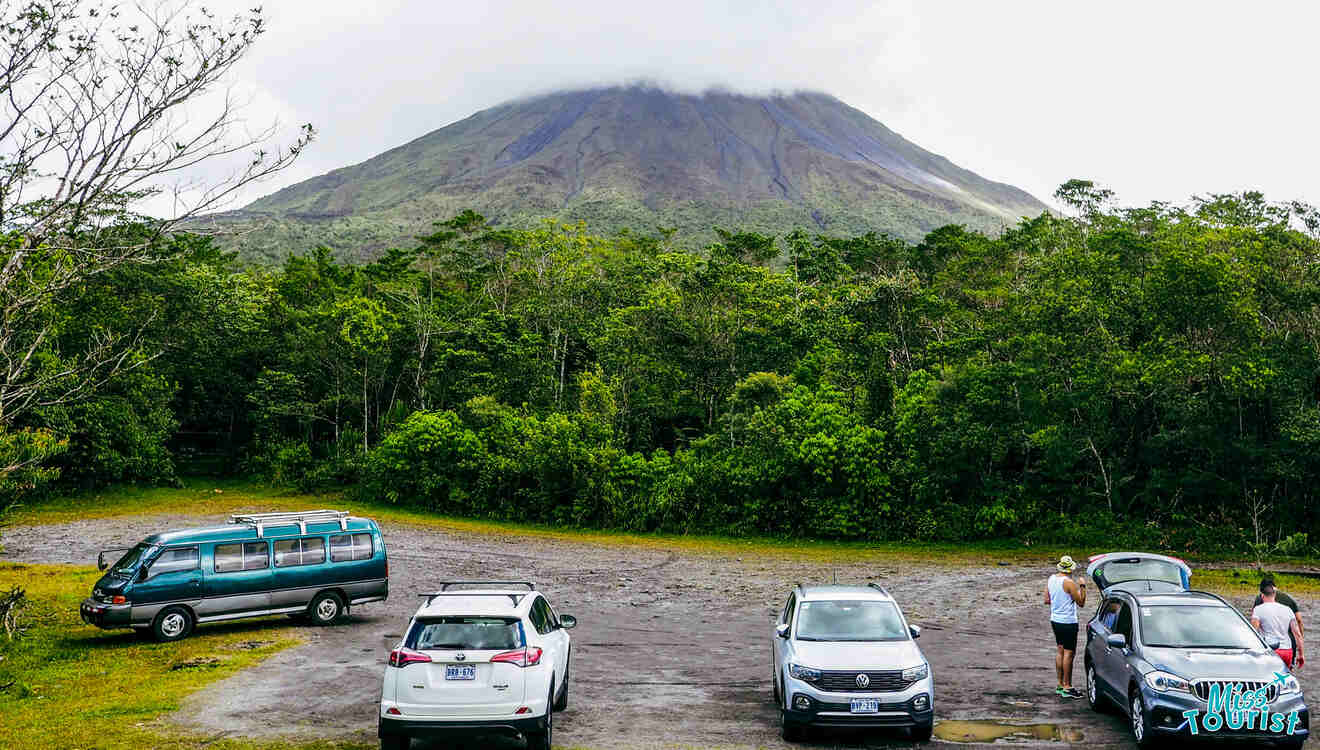
To 4WD or not to 4WD? That is the question!
1.4 How to book your car in Costa Rica?
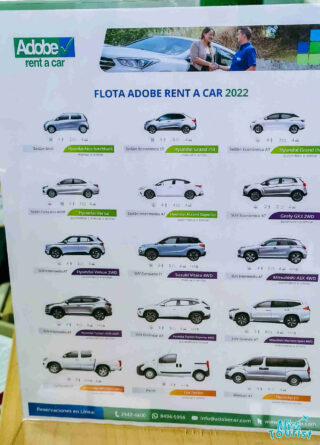
Here are some basics:
Best car rental agencies in Costa Rica: Alamo, Enterprise, Europcar, Hertz, Adobe Rent a Car
Where to book: I researched and compared prices many times, and it is cheaper in 95% of the cases to book it via Rentalcars (that’s the site comparison I used myself). If you do not find anything there, also check DiscoverCars.
When to book: I recommend getting your car ASAP once you know your dates. It is NOT getting any cheaper with time, trust me!
Where to pick up your car in Costa Rica: the most common places are San José Airport, San José Downtown, and Liberia Airport. If you use price comparison companies, you can check the price for different locations in 1 click.
1.5 Tips on how to save on your rental car
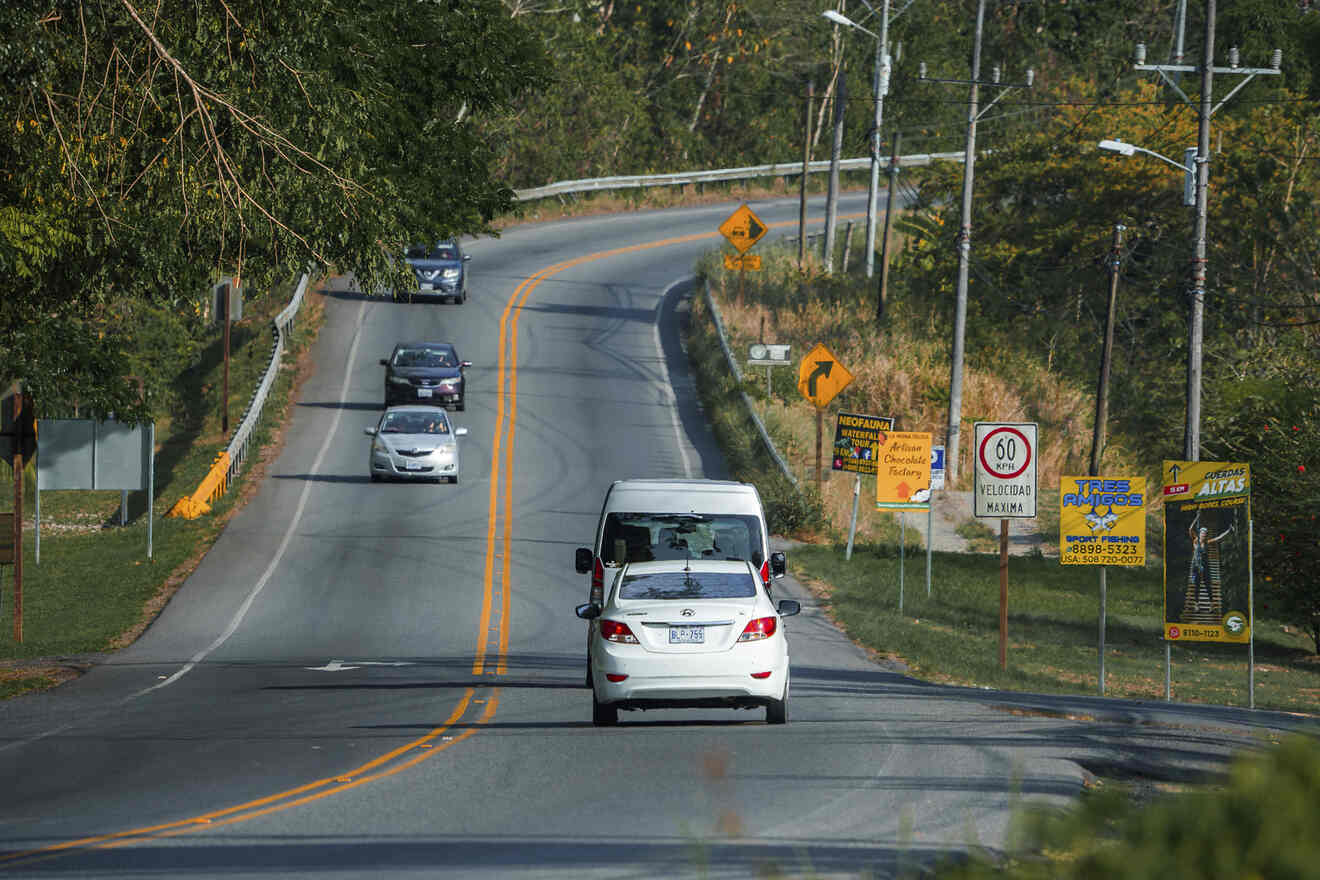
Here are some ways to save on your rental car:
- Book as much in advance as you can
- Book for a longer period of time
- Go in a shoulder season
- If you can, drive manual (usually manual transmission cars are a bit cheaper)
- Share the cost with your friends
- Do not rent a 4×4 unless you really need it
- Check rentals in different locations – at San José Airport (if that’s where you arrive), San José Downtown, Liberia Airport, etc. The difference might be worth it!
2. Other costs: insurance, deposit, and gas
In this section, you will learn everything about pricing concerning your rental car in Costa Rica (other than the actual car cost we discussed above). Check out the insurance section below especially carefully, as it is quite tricky, and people get confused and tricked because they don’t know the specifics of this country.
2.1 Car insurance types and prices
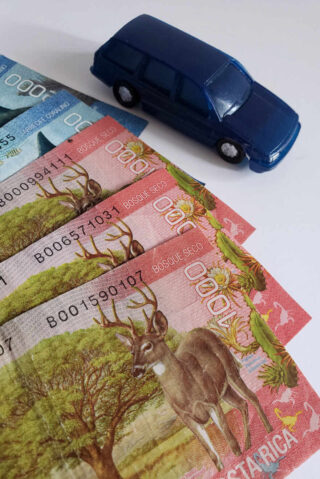
This was always a very complicated topic for me because car companies try to make it super hard to understand, and, in my opinion, most of them actually scam people with insurance.
I inquired everywhere, made my own independent research, and tried to make it easy to understand for you:
Here are the types of car rental insurance in Costa Rica (with prices):
Liability protection
Mandatory insurance, about US$15.5 (CRC 8,320) a day. If the accident happened at your fault, it would usually cover 80% of the damage to the other car. You will have to cover the remaining 20% from your pocket + the damage to your rented car in full.
Collision Damage Waiver (CDW) or Loss Damage Waiver (LDW)
Also mandatory unless you have another insurance from your bank, about US$18 (CRC 9,660) per day. CDW covers the damages that will happen to your car, you will still need to pay up to US$1,000 (CRC 536,750 ) out of pocket, depending on the Terms and Conditions.
Extended protection
Not mandatory, up to US$23.5 (CRC 12,615) per day. Covers everything, you will not need to pay 20% nor US$1,000 (CRC 536,750). It also covers a bit more than LDW (windows and tires, for instance).
NOTE: The cost sums up! So, if you take an LDW, it is going to be US$15.5 + US$18 = US$33.5 per day (CRC 17,980 per day).
If you see a site where they quote you a much lower price, including the insurance, I can almost guarantee you that they are going to demand an extra payment on arrival (always check their reviews!). CDW/LDW insurance is required, and there is no way around it, unfortunately.
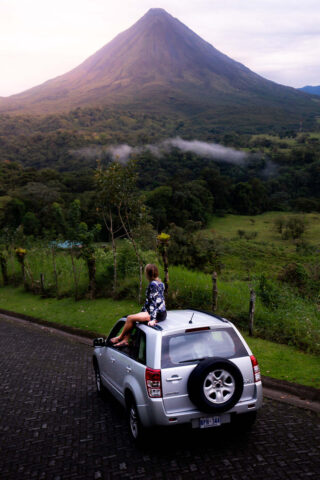
PRO TIP: Your credit card might actually provide you with CDW/LDW insurance – call your bank and ask them. If so, you will need a paper from your bank with the statement that your credit card provides this protection. FYI: Visa Gold and Visa Platinum do not offer CDW/LDW after 2021. 😣 Apparently, in 99% of the cases, your bank will not cover 3rd-party damages. 😕
Please note that even if you have a full insurance option, it still does not cover you in case an accident happened when you went off-road if you were drunk, etc.
HACK: There is another alternative I found, and that is a marketplace for all car insurances, so you do not need to get the overpriced one provided by the rental company. InsureYonder is a kind of marketplace that will instantly give you a quote on your insurance and offer you many options, with reviews, etc.
2.2 Deposits – how much money will they freeze on your card?
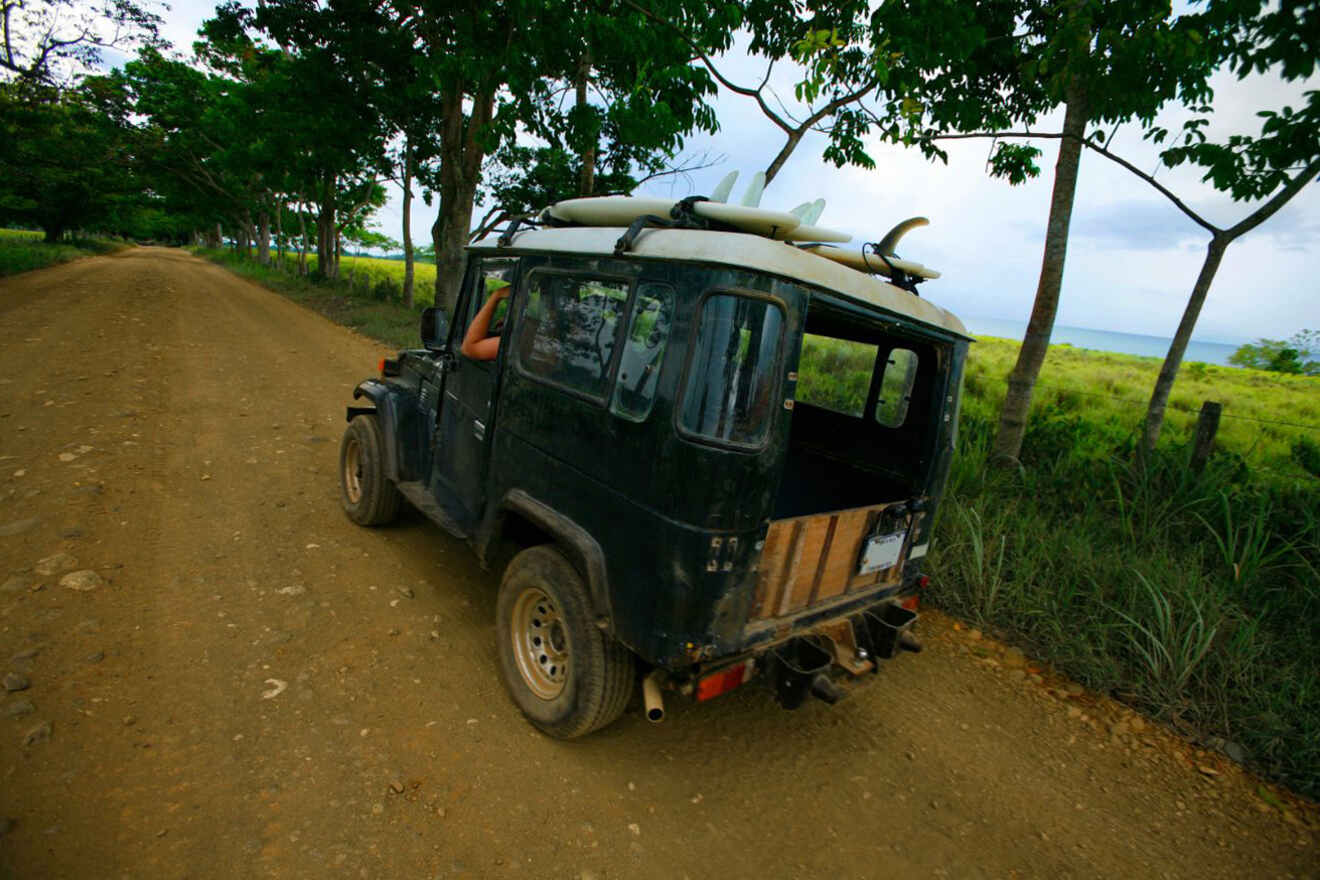
Note that if you are not taking the full insurance, your car rental company will freeze a sum on your credit card and will unfreeze it when you return the car back in the same condition.
The sum depends on the company and on the type of car (the more expensive, the higher your deposit), but it should be around US$1,000 – 2,000 (CRC 536,750 to 1,073,500). Keep that in mind when budgeting your road trip around Costa Rica.
In my case, the money came back to my bank (got unfrozen) in 1 day, but I’ve heard it can take up to 10 working days or even a month in some rare cases.
NOTE: If you want to know more about pricing for other things like child car seats, Wi-Fi routers, one-way rental fees, etc., I cover it all in section 5 of this post.
2.3 Gas prices and types
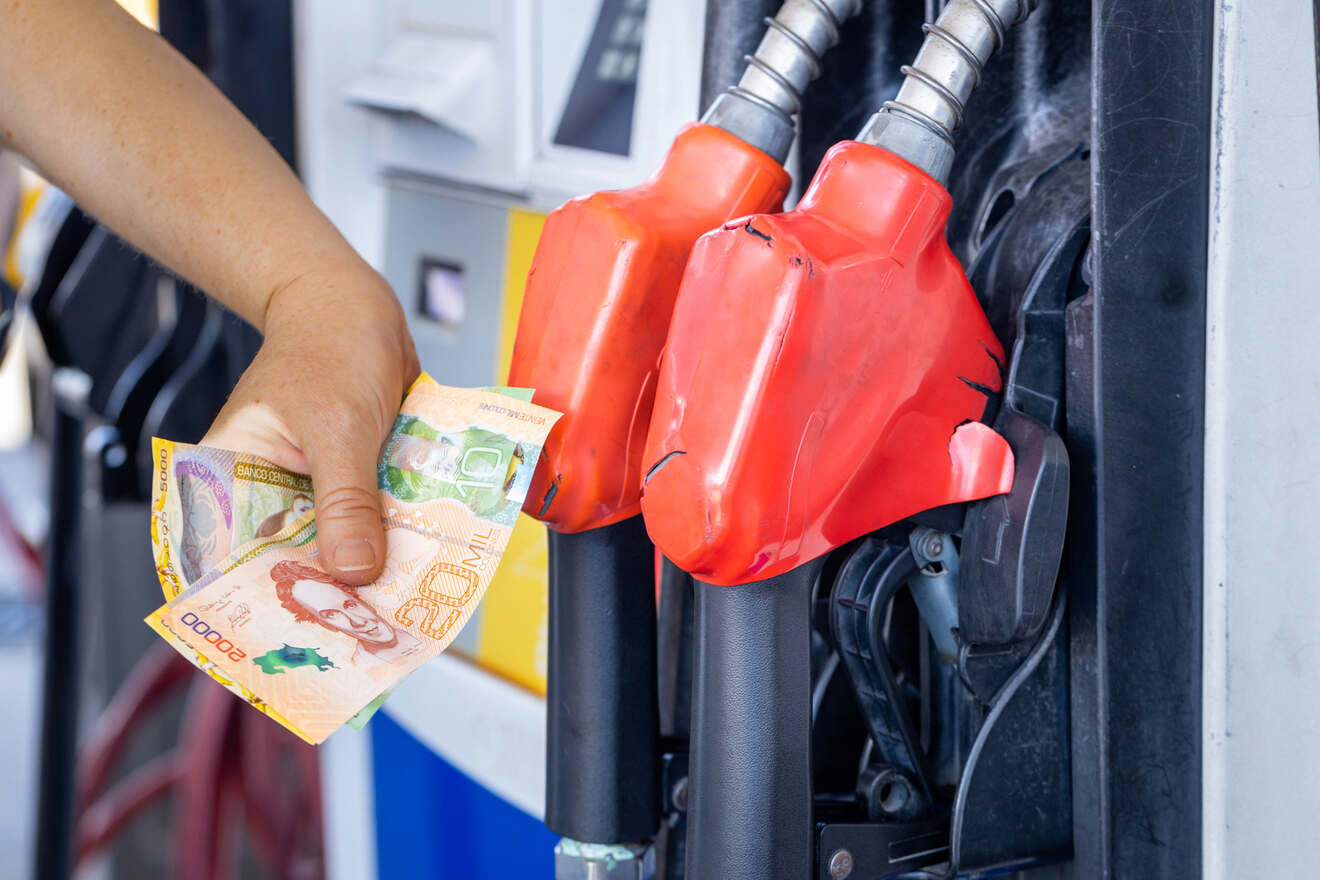
The current gas price is (check the updated price here):
- US$1,4 (750 CRC) per liter or
- US$5,3 (2,900 CRC) per gallon
The cool thing about gasoline prices in Costa Rica is that it is regulated by the government, so there is no point to shop around to find a cheaper price – it is the same everywhere!
HOW MUCH WILL YOU SPEND: Considering you will drive more or less 500 km (310 mi) in a week (which is an average of a typical tourist would, you can expect to spend about US$100 (CRC 53,670) per week on gas.
PRO TIP: Just use Waze or Google Maps to find the closest gas stations. Usually, there are quite many around (except maybe in Corcovado, so fuel up in advance if going there!).
Normally they will understand if you say “Full,” but if they really don’t, “Lleno” (pronounced as “ie-no”) is the word in Spanish. Both cash and cards are usually accepted in gas stations, but as always, if you pay cash, pay in CRC, otherwise, the conversion rate will be really bad.
Types of gas
- Plus 91 – The cheapest gas, the one everyone uses for car rental.
- Super – A bit higher quality gas.
- Diesel – Pretty popular in Costa Rica for SUV cars, and it is also a bit cheaper than gas.
Just FYI, most gas stations in the country can also provide extra services like changing oil, adding oil to your tires (something that we actually used), etc.
3. Road tolls and fines
This section is all about rules and regulations, plus how much you would be charged if you broke the rules.
3.1 Tolls
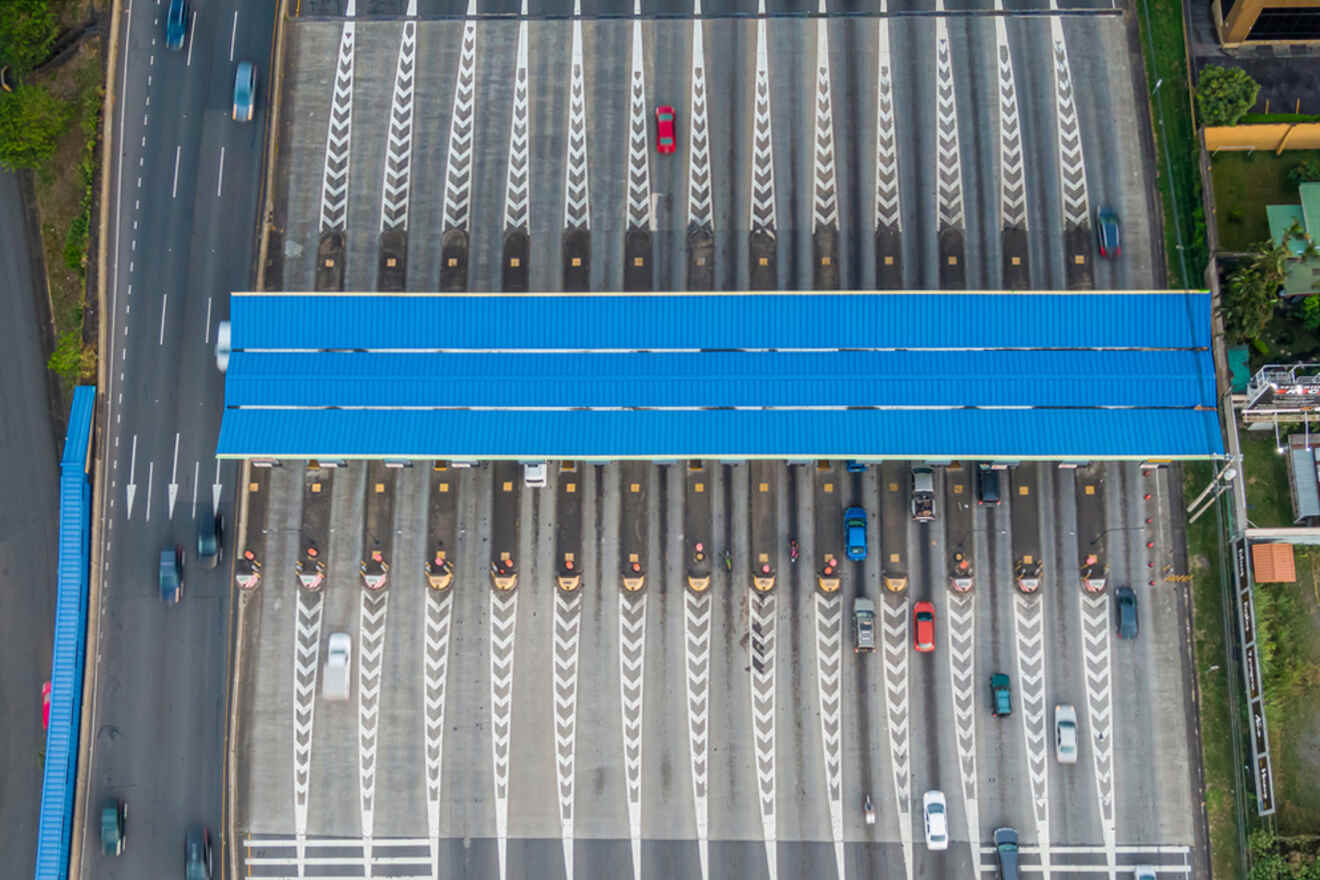
Be prepared to use quite some tolls in the country, there are especially many around San José, which is one of the most popular places to stay in Costa Rica. The tolls are usually inexpensive though (anywhere from US$0.3/CRC 160 to US$2/CRC 1,073). In some cases, you can pay either with cash or a card, but most of the time, it is cash only, so have some coins ready.
PRO TIP: You will understand that the toll is coming soon by the “Peaje” sign, or when you see the toll itself, the price will be written on top of the toll. Just make sure you are not going to the “Quick Pass” line, which is for locals that have a special pass.
I’ve heard you can pay with both USD and CRC (colones), but I only paid in CRC, so this is not confirmed info. In any case, you should definitely have some local money to avoid the conversion rate hustle on the road. If you have to use USD, try to find some small bills as they will give you change in colones in any way.
3.2 Fines
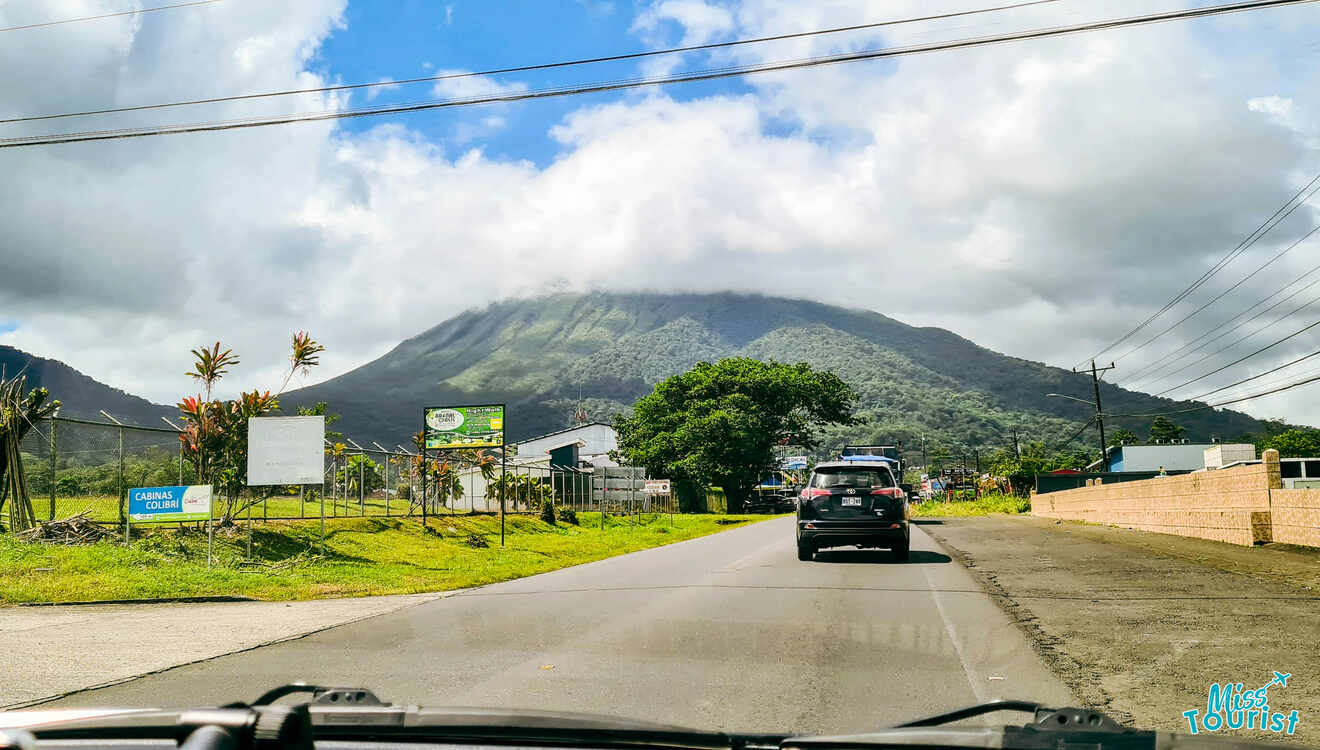
You will see that most locals do not respect the speed limits, but I recommend you do. Police checks happen, and the fines for speeding are steep, about US$300 (CRC 161,024) on average (there are speed cams on important roads, too).
If you get the ticket, you should call your rental company and pay the fine when you return the car (you will HAVE TO pay it, otherwise they may not let you out of the country at the airport).
We were stopped by the police only once, it was a normal check, and it is not uncommon.
Definitely do NOT try to bribe a police officer if you did something wrong. This is not one of those countries, at least not anymore.
PRO TIP: Use Waze for navigating. It is a preferred tourist and local choice, and apart from navigation help, it also announces police checks, accidents, and traffic ahead. Another international sign for “Police ahead” is a flashing light from cars going in the other direction.
4. Road quality and conditions
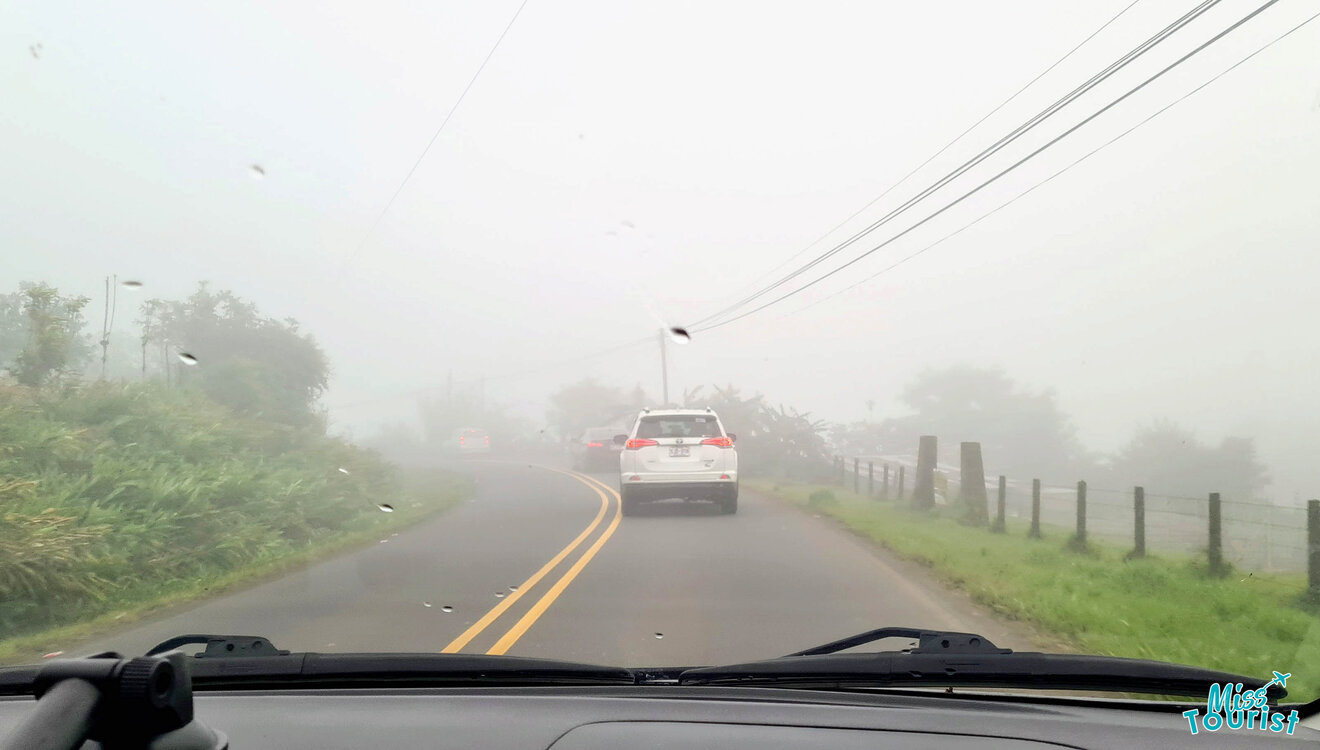
This country is still mysterious to me in this way – it looks so tiny on the map, but the distances are very deceiving and take MUCH longer than they appear. You will probably need to go up and down a mountain, go around some volcano, or there is simply no direct road!
In most cities, the road conditions are fine, you may find potholes here and there, but most of it is paved. Otherwise, outside of the main cities, farm roads are pretty common. There will be plenty of places where you will have to go off-road, like if you are going beach hopping, for example.
Quite some roads in Costa Rica can be unpainted (no marking white lines), so you will have to visually divide the roads in half in some cases. Also, once you are out of cities, there will hardly be any traffic lights, seriously!
The quality of roads is decent when driving to (but not so much in) La Fortuna, Arenal, Jaco, Manuel Antonio, Puerto Viejo (some unpaved parts but no 4×4 needed), and Playas del Coco. Some hotels might be located in hard-to-reach areas, so if your car is small, I would ask the host and read the reviews before embarking.
4×4 required roads to Uvita, Osa Peninsula (Corcovado), San Juanillo, Ostiona, Nosara, Turrialba, and Rio Celeste (4×4 during the rainy season, esp. September to November).
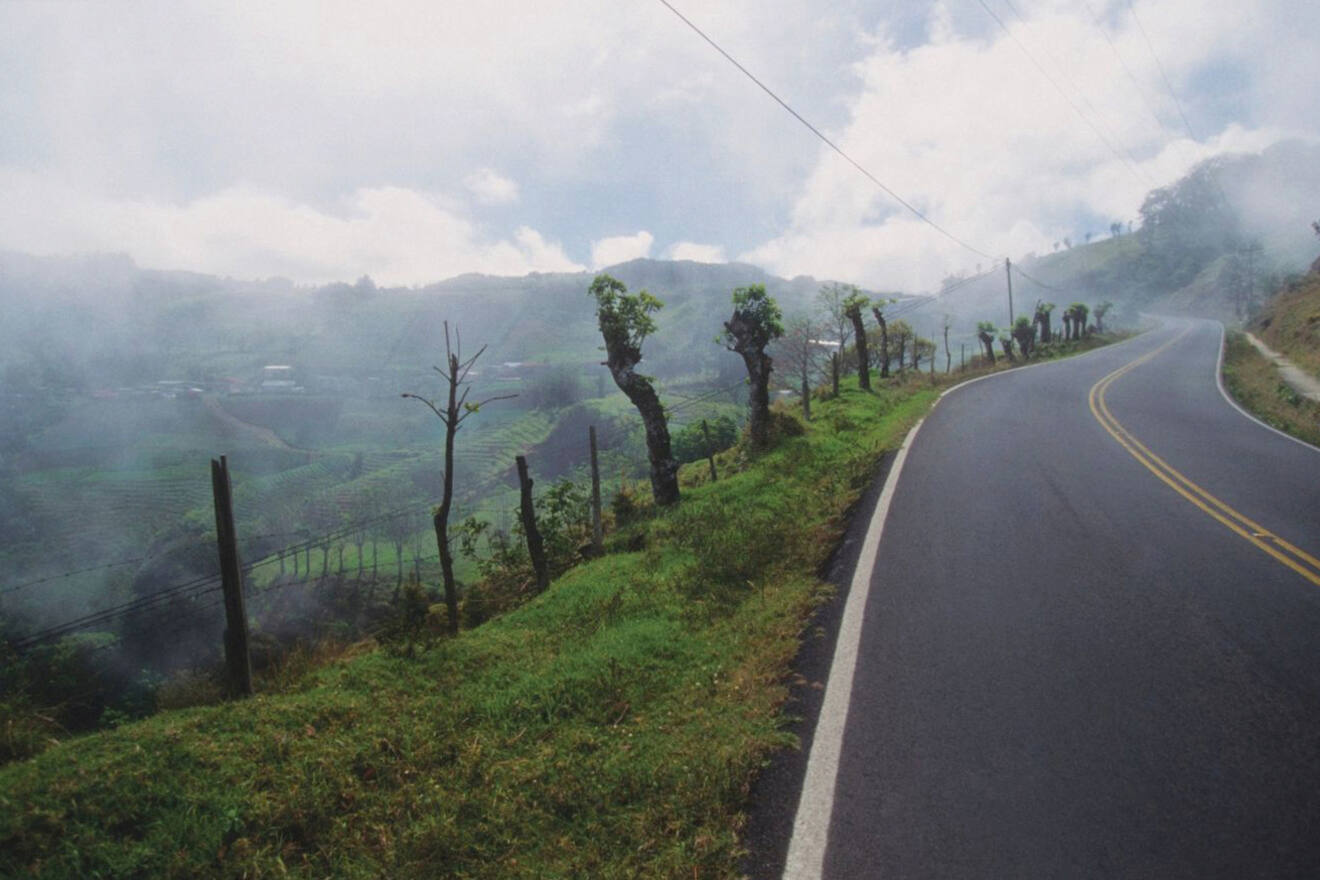
Also, there might be a couple of river crossings, but they are usually safe; just be aware that it is not covered by any insurance, so be extra careful there. There are more things you should know about roads in Costa Rica in section #6 of this post.
Driving at night: Please keep in mind that it gets dark by 5:30 – 6 PM in Costa Rica, so plan your road accordingly! I would stay away from driving in the dark for long distances and during the rainy season, especially if you are not an experienced driver.
Driving during the rainy season: If you are visiting Costa Rica from May to November, chances are you are going to catch at least some rain (or a lot).
Except for a river crossing (which generally may appear in Nicoya or Osa Peninsulas), you should beware of landslides and washouts. The landslides are not super common, but if you are taking Road 32 (towards the Carribean Coast), I would first double-check the road condition with your hotel.
PRO TIP: If it is raining and dark and you feel uncomfortable driving, you can drive behind a big truck/bus and use their backlights for guidance. These guys usually know the road pretty well.
4.1 Road signs
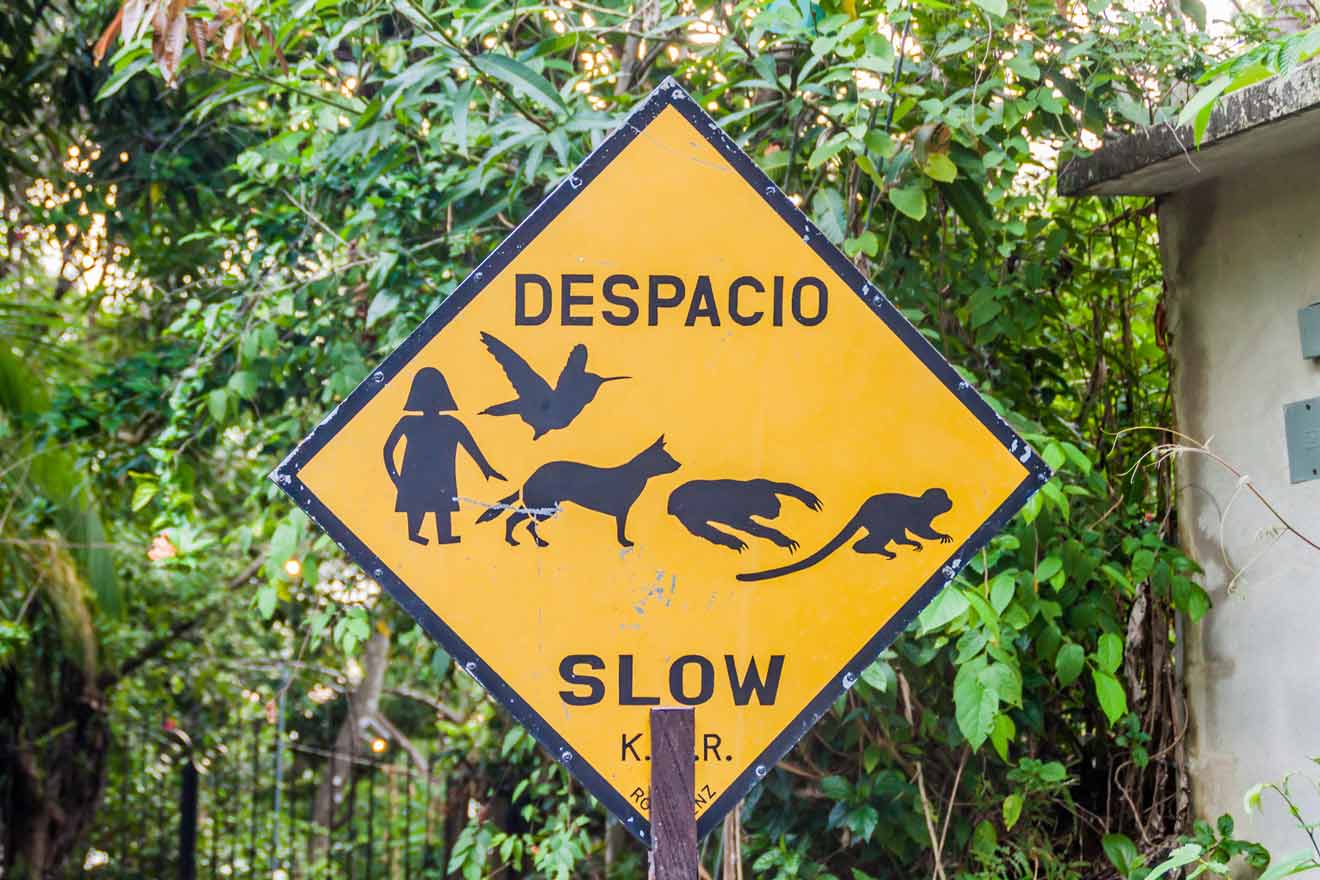
No worries, all the road signs are exactly the same as they are in the USA/Canada/the rest of the world, but the words (if they are any) are in Spanish.
Here are the main ones you may want to learn and a good video to illustrate them:
- Alto – Stop (red octagon)
- Velocidad maxima – Maximum speed (in kph)
- Ceda el paso – Yield (red and white triangle upside down)
- Puente angosto – Narrow bridge
- Desvio – Detour
- Despacio – Slow
- Cruce de monos – Monkey crossing
- Una via – One way
- Carretera en mal estado – Road in bad condition
- No estacionar – No parking
- Curvas peligrosas adelante – Dangerous curves ahead
- Calle sin salida – Dead end
5. Parking rules and prices
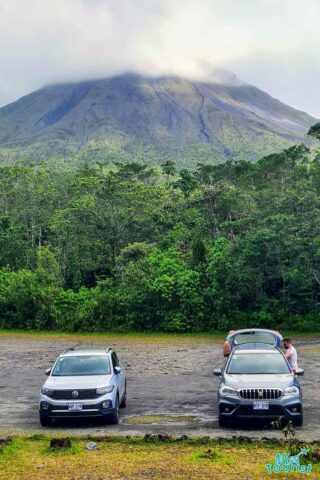
Use official parking in big cities (San José, Liberia, Jaco, etc.) otherwise, you may get a ticket for not parking in the right place. As for other places, it is pretty much self-organized. Sometimes you will have some parking assistants that you will need to pay up to US$4 (CRC 2,000). If it is free parking, try to choose a well-lit place where there are other cars already.
PRO TIP: When you arrive at an attraction that has parking, like a national park, for example, a parking guy will INSIST you park your car with the back. I do not know why and I even saw a foreigner making a scene about it, but they are pretty strict about it.
6. Additional fees
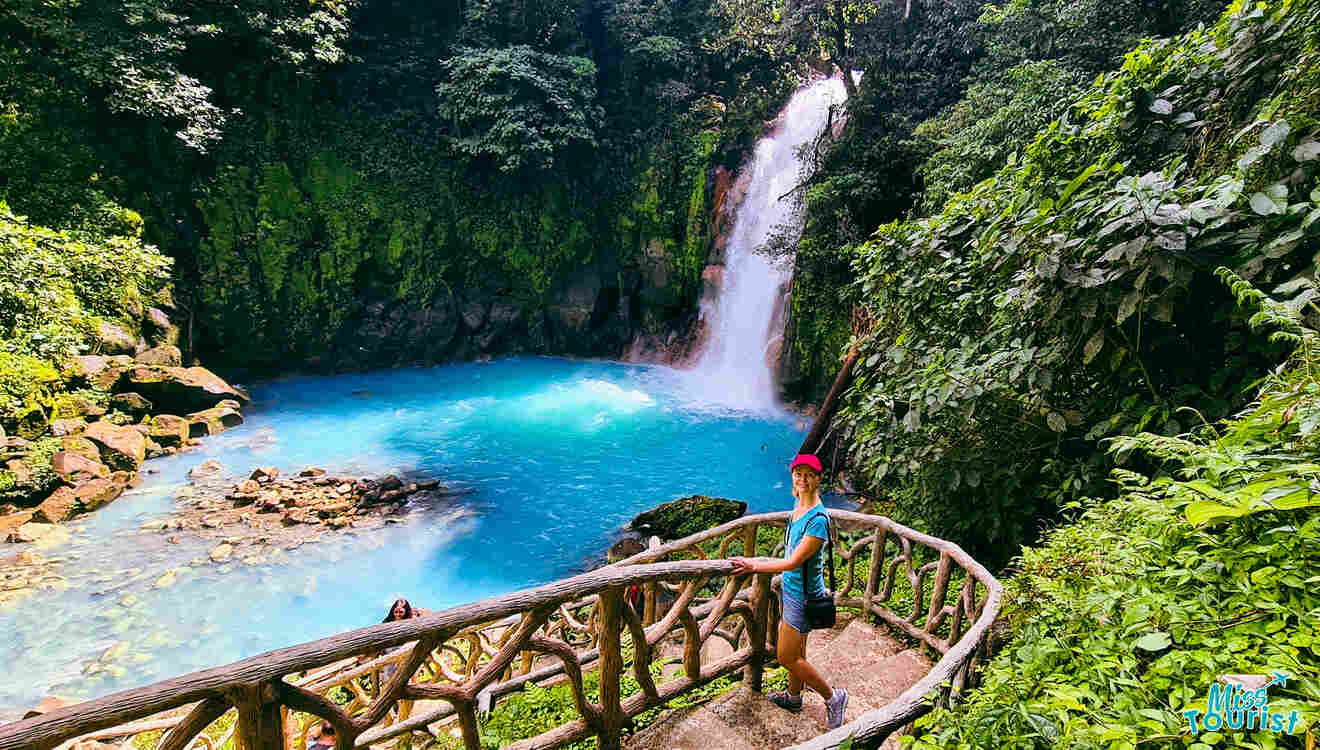
I am sure that you have already figured that compared to some other countries, renting a car in Costa Rica can be quite costly. But hey, it does not stop at the daily rate you have to pay for the car! You already know that insurance is mandatory, but below are some other fees that you might have to pay, and I don’t want them to surprise you.
NOTE: Some of the companies charge extra for this, and some don’t (well, they are included in the price). So if you will need to use any of the things below, it is worth double-checking with them how much it is going to cost:
- GPS – Up to US$11 (CRC 5,904) per day. If the car is an older model and it does not have a USB charger for your phone, buy a USB adapter in advance so you can use your phone all the time as a GPS. If you can bring your car phone holder, that would be awesome, too!
- Wi-Fi router – Up to US$12 (CRC 6,440) per day, but you can just buy SIM cards instead. They are about US$12 (CRC 6,440) per month!
- One-way rental – From US$20 – 200 (CRC 10,734 to 107,350). It’s not possible to organize at all with some companies, so please ask beforehand, as the price heavily depends on the location.
- Fuel if you return not a full tank – There is definitely a fee, and the company will charge you way more than a gas station would.
- Transfer fee – Most are free, but some companies actually charge you money to transfer you from the airport to their office.
- Young/senior driver fee – Some local companies may allow you to rent a car if you are younger than 21, but it will cost you more, and the insurance will not cover anything in case there is damage.
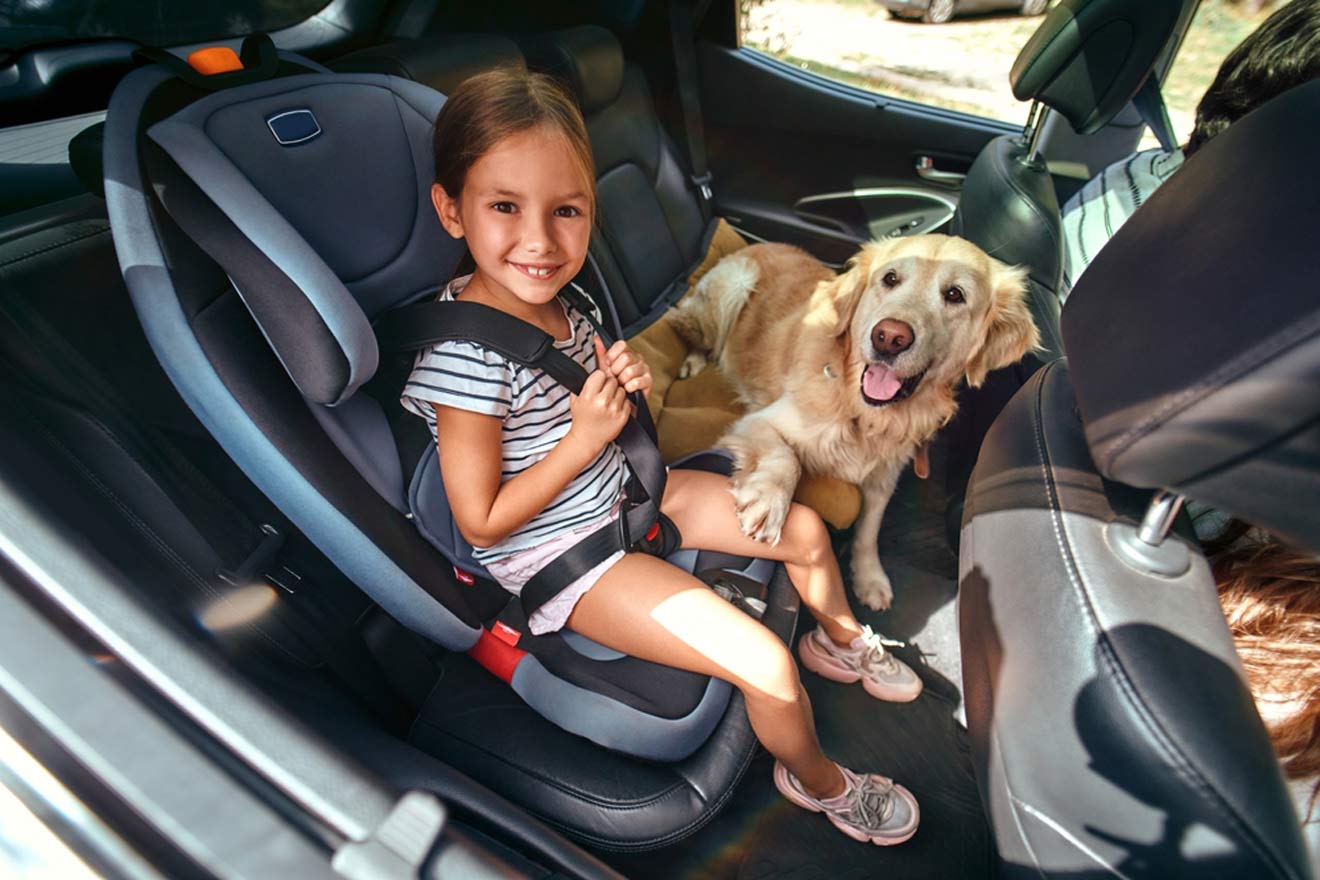
- Child seat – US$3 (CRC 1,610) for a baby seat and US$1 (CRC 537) for a booster seat per day. You can get your own car seat with you, I can recommend this one).
- Car cleaning – US$70 – 100 (CRC 37,570 to 53,674). If you know the car will need proper cleaning because of sand on the sears, etc. I recommend doing the cleaning yourself before returning the car. It costs about US$10 (CRC 5,370), but rental companies will charge you way more (They said US$75 for us at Budget).
- Smoking fine – US$100 (CRC 53,674). Do not smoke in your car, this is forbidden in all companies in the country.
- Second driver – Up to US$10 (CRC 5,370) per day for an extra driver. This depends on the company, and sometimes it is free of charge.
- Extra mileage – Honestly, I’ve never heard of limited mileage in Costa Rica, but it’s worth checking the T&C just in case.
- Surf racks – If you are going to CR to surf, you should definitely request this as an extra option from your car rental! The prices vary, it can also be free by some companies, be sure to ask in advance if you need it.
7. Other things to know about renting a car in Costa Rica
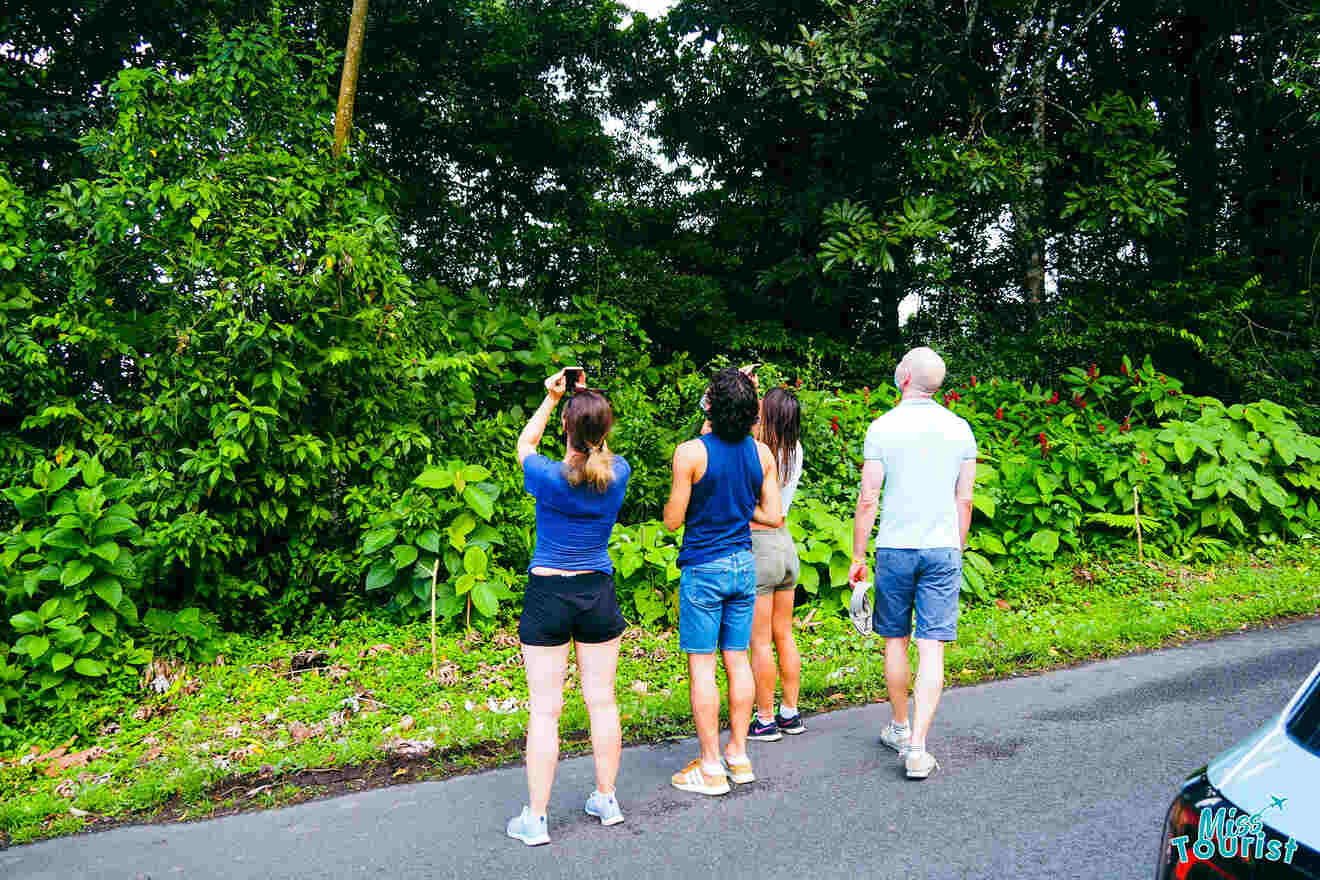
Costa Ricans are hmm… creative in driving, and you can never expect them to follow a rule/signal a turn, etc.
The general driving mood in Costa Rica is that you should not expect other drivers to give you way, but they might cut you off at all times.
Also, turn signals? Do not expect Costa Ricans ever to use them 🙂
I definitely do not want to scare you off – driving is fun and certainly possible in CR. But, like anywhere else in the world, I expect drivers to do all the stupid things unexpectedly, and here in Costa Rica, that actually happens.
Here are some things that did not fit in previous sections, but I want you to know them anyway:
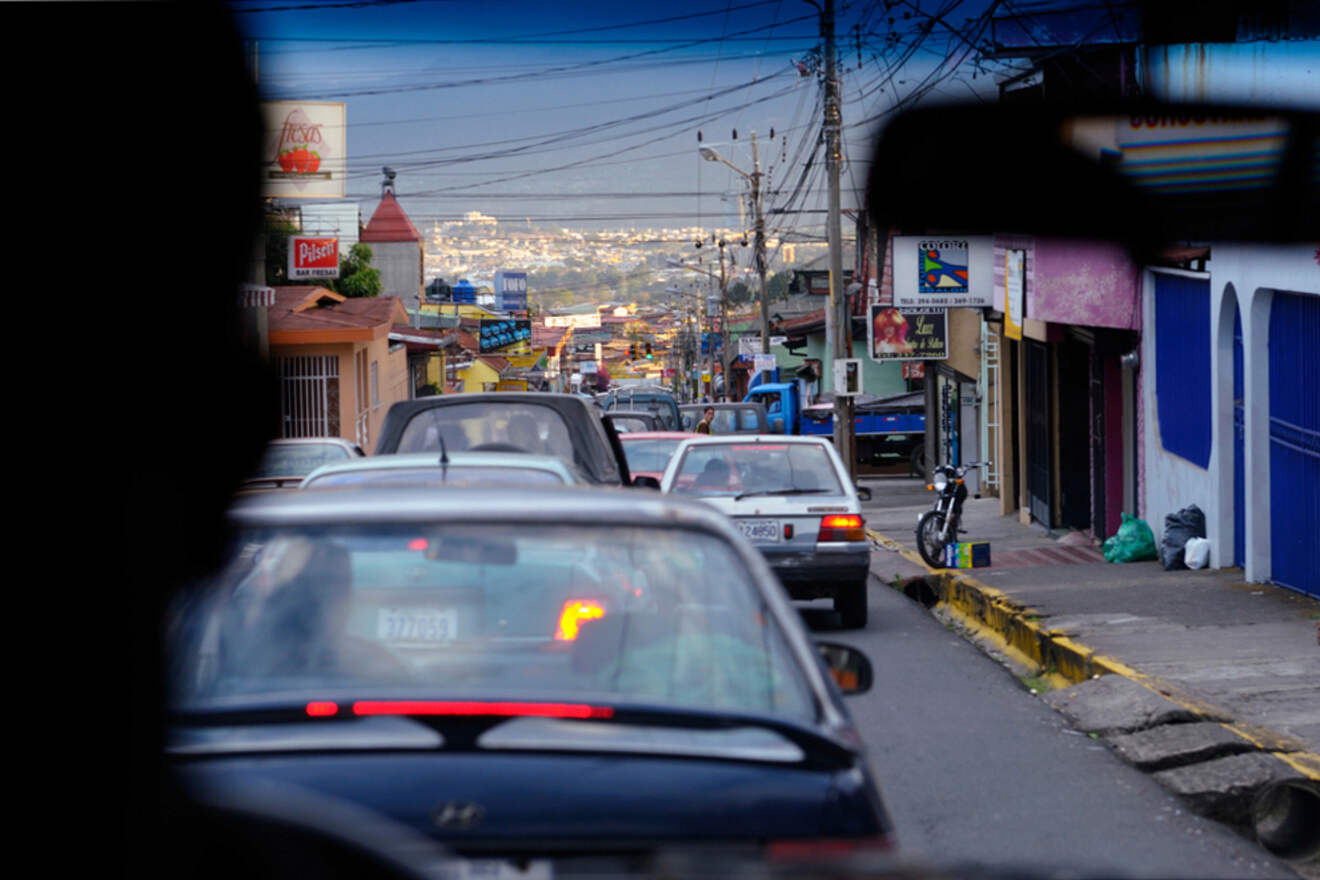
- Lots of overtaking happens by big trucks or minivans with tourists. Most roads are one lane only, so get used to it.
- Traffic jams in San Jose are baaaaad. Dedicate some extra time if you are going there, especially during the rush hour (4 – 7 PM)
- Avoid the animals on the road! We actually saw an armadillo(!!) and a couple of huuuuge iguanas crossing the road. You can also see cows, chickens, etc.
- If you are changing lanes and signaling, still double-check that the other drivers are letting you go. They do not pay much attention to the blinkers.
- Lanes end and merge with the road fast, so you have to be prepared
- If you stop suddenly, make sure to switch on your emergency light to signal the driver behind you to stop.
- Bicycles and bikes are very popular in the country – beware of them.
- Addresses are really weird – 100 m down the road from an antique store, just pull in the name of the attraction/hotel – you will get to your place ok
- Driving with small kids – I know I only gave very little info on the subject in the beginning, but you can read more detailed requirements about it here.
- If you are renting a campervan and you are going with younger kids, make sure the campervan has a latch to secure the kids in the seats first.
- You will encounter lots of one-lane bridges along the way. Look for Yield (Ceda) sign or if there is none, just let the other car pass first.
8. Safety precautions
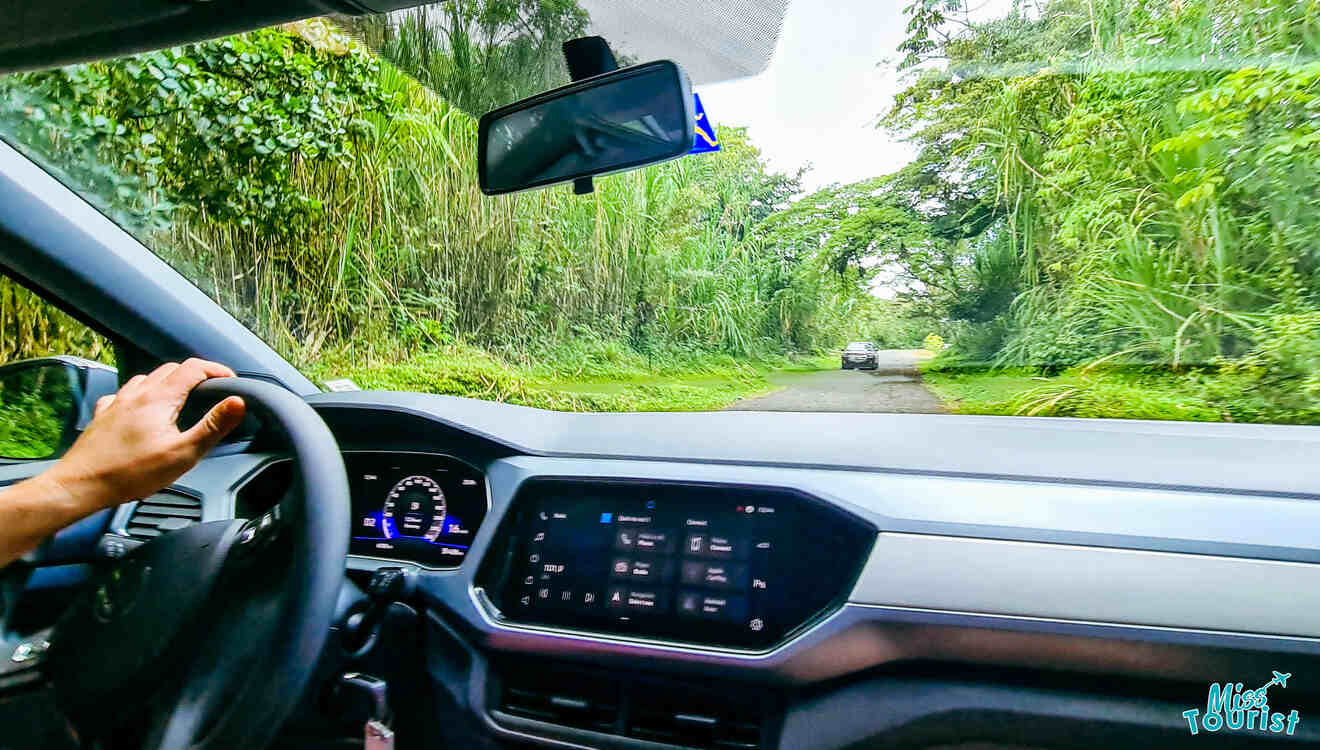
Costa Rica is a pretty safe country to be in, but, like anywhere else, it always makes sense to follow some common sense safety rules:
- Lock your door when driving – It is not super dangerous in CR, but there are people that will approach you at traffic lights in cities begging or selling something, and I just feel safer when I know no one can open the door without my permission.
- Do not leave your valuable belongings or anything actually in the car when away.
- Close the windows when leaving the car, even if it is for 5 minutes.
- Do not EVER drink and drive, even if you are a great driver. If something happens to the car, the insurance will not cover it just because you had alcohol in your blood.
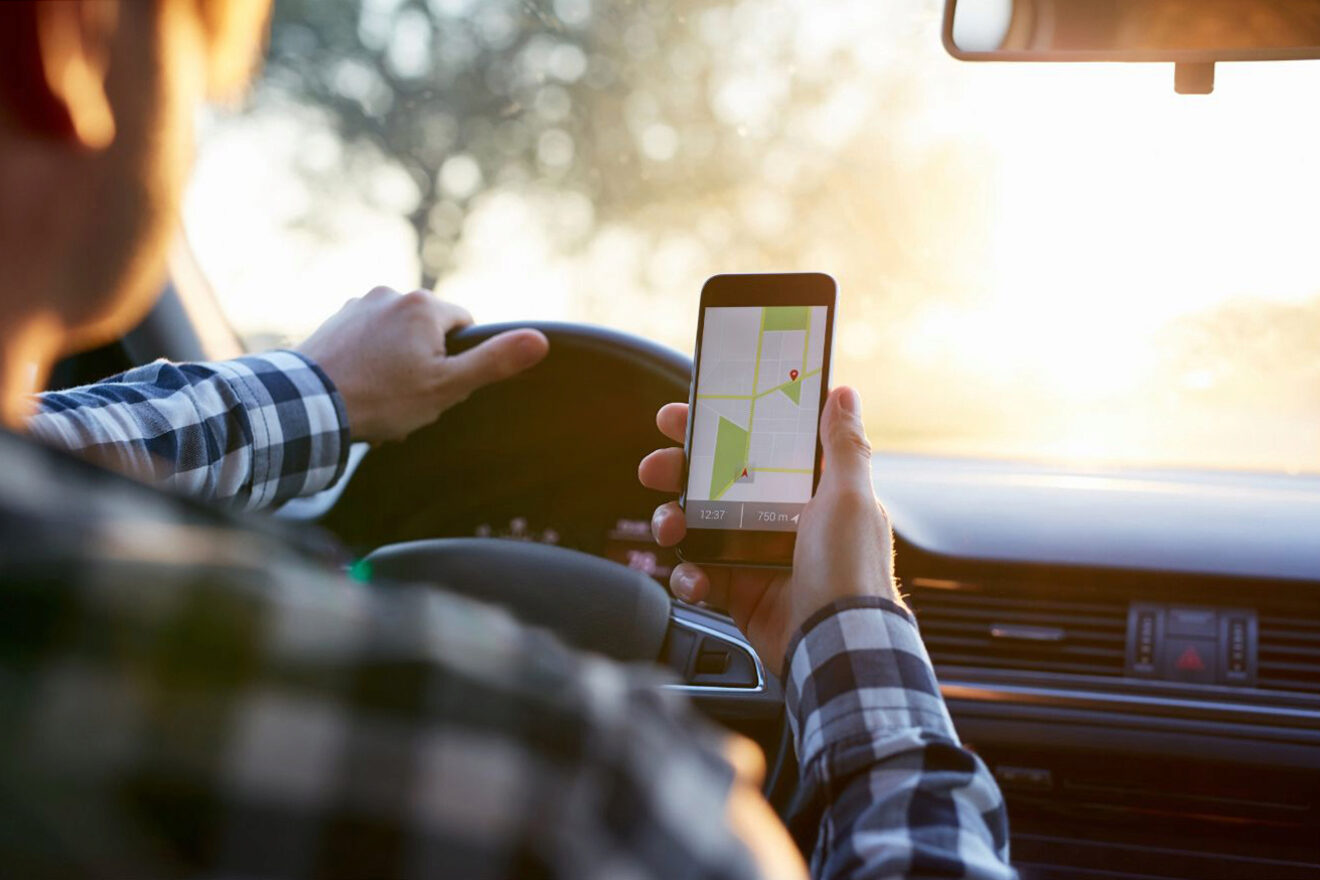
As I mentioned above, everyone is using Waze in the country, from taxi drivers to “normal” people, and I recommend you download it, too, if you haven’t yet.
We actually got lost a couple of times with Google Maps as it does not know all the reads here yet, Waze was much better.
Oh, and Waze will also tell you the speed limit in that particular part of the road, so that’s a huge help, too!
Other than that, I don’t really know any special country-specific apps you would need to be honest, but as with anywhere else, check the weather before you go to avoid unpleasant surprises. If you ever need to communicate with the locals, WhatsApp is widely used everywhere.
10. Tips for when you receive the rented car
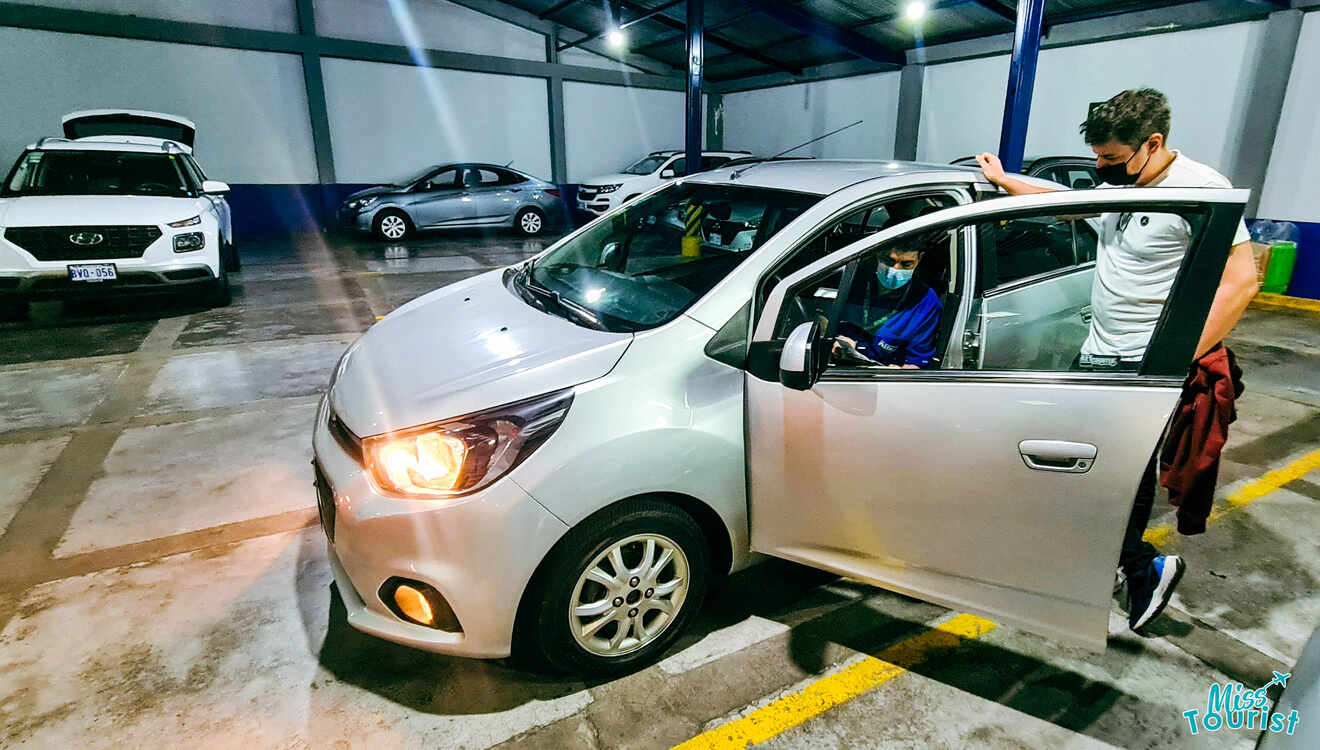
Here are the things you need to check before you take your rental car from the rental office:
- Check the damages and take pictures and videos of the car. Use a flashlight if there is bad lighting. Some small companies MIGHT want to charge you for damages you did not do, but it will be much harder if you have proof it was done before you started driving it.
- Check that you have all the necessary car documents in the car and that you know the number to call in case of an accident.
- Inspect the condition of the car from the inside – Is the A/C working, is your phone connecting for music, is there enough gasoline, etc.
- Check your GPS – If you don’t understand how to use it, make sure to ask the company representative before you leave.
1. What to do in case of an accident
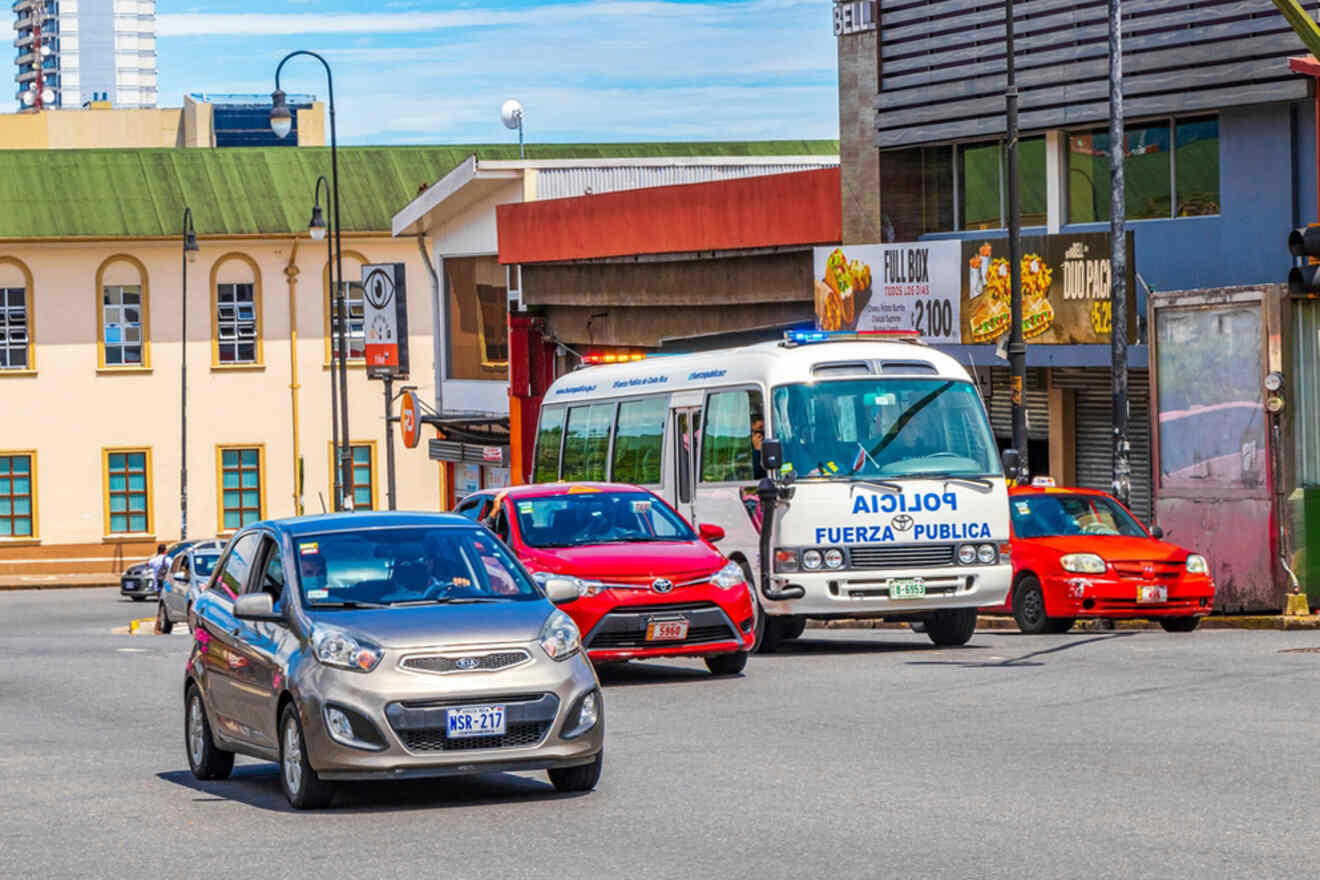
If there are any injuries, call 911 (they also speak English) and then call the number of your rental, they will tell you what to do next.
If no one is injured, you can move your car from the road. I honestly suspect that locals know that rule because I saw many accidents blocking the traffic and not moving anywhere until the police came.
If you have a flat tire (we had it once) and it is not that bad, you might want to try to pump the tire at the nearest gas station.
| 🚗 Economy car: | from US$60 |
| 🚜 4×4 price: | from US$85 |
| 🚐 Campervan price: | from US$95 |
| 👶 Driving age: | 21 |
| ⛽ Gas price: | US$1,4 per l or US$5.3 per gl |
| ✈️ Cost of traveling: | High |
| 👍 Most popular car: | Toyota Yaris or similar |
| 🚘 Top car rental company: | Rentalcars |
FAQs about renting a car in Costa Rica

📅 When is the best time to go to Costa Rica?
The high season is anywhere between December and April + July, the low season is May, June, and from August to November.
🚗 Do I need to rent a car in Costa Rica?
Short answer – if you are going to travel around the country, definitely! Not only is it beautiful, it will save you tons of time and allow you to be flexible with where you go. You pretty much have no other option! Public transportation doesn’t go everywhere, local flights exist, but they don’t fly every day, and prices are quite steep.
👶 What is the minimum age to rent a car in Costa Rica?
The age depends on the company’s requirements and can vary from 21 to 25 years old. Check the rules with each company individually. There is usually no maximum age limit and no extra charge for it.
⌛ How much in advance do I need to book my rented car?
As much in advance as possible, the rates are not going to get any cheaper. In general, I would recommend booking the car 6 – 8 months in advance and then checking again 2 – 3 months before the trip if there are any deals meanwhile.
🤑 When is the most expensive time to rent a car in Costa Rica?
It is definitely Christmas time! If you are visiting anywhere from Dec 15 to Jan 5, I highly recommend booking your rental car as much in advance as possible. Not only is it not going to get cheaper, but also, the supply runs out quickly.
👛 When is the cheapest time to rent a car in Costa Rica?
The time when everything from car hire to hotels becomes more affordable is May, June, and September through November. You can expect your car to cost around US$60 (CRC 32,204) per day with obligatory insurance included.
Conclusion
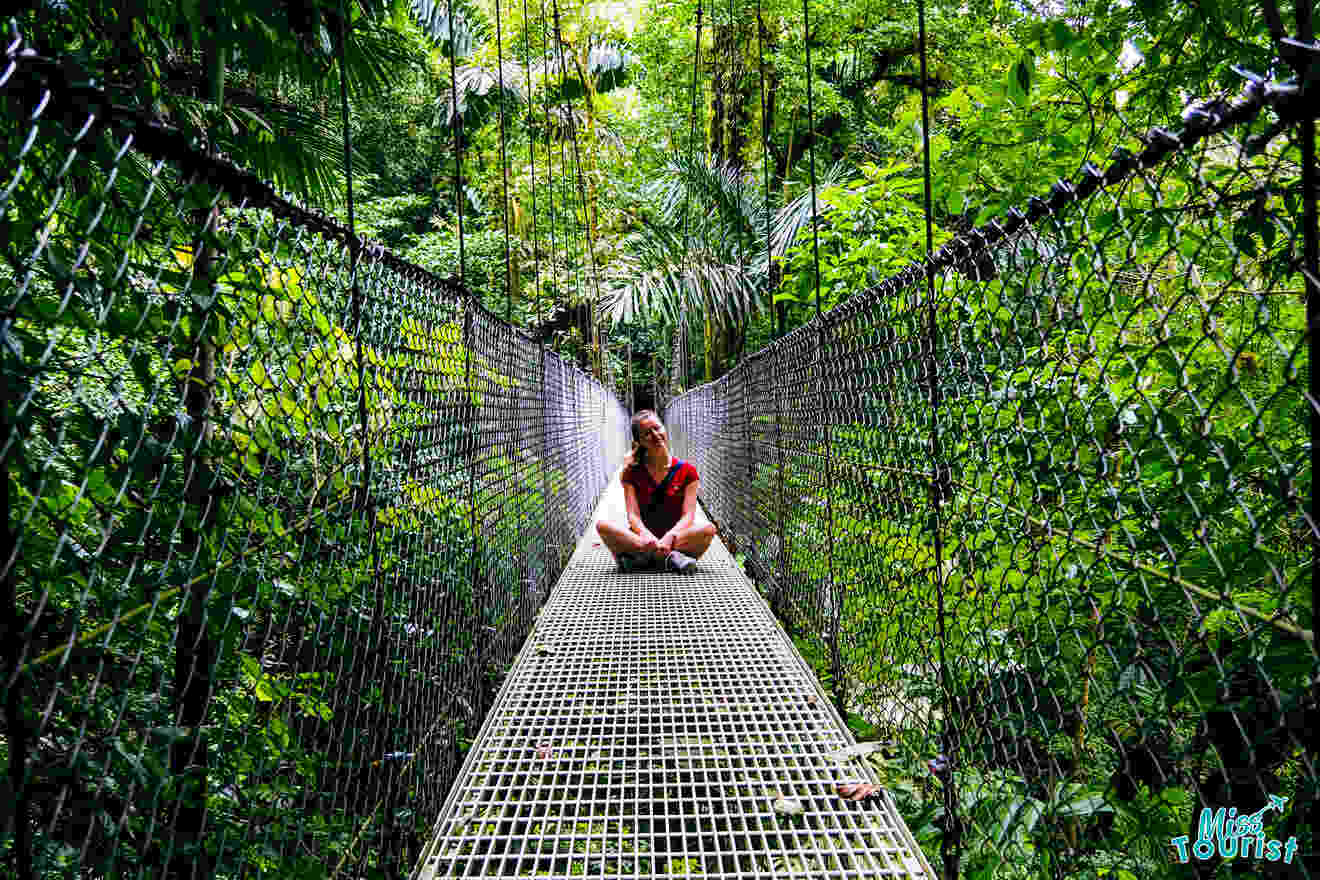
Overseas driving with new rules and conversions from lt to gallons, from mph to kph, is challenging enough, and I truly hope I managed to shed some light on that matter!
Renting a car in Costa Rica is going to be one of the best decisions you are going to make. Plan your trip wisely, and I am sure you will have no regrets after seeing all those stunning views and going with the flow, i.e., being flexible with your own mode of transportation.
I hope you enjoy your vacation and feel the “pura vida” is Costa Rica. For more information on Costa Rica, check all of our related posts here!
As usual, if you have any questions, be it on pricing, or company names, or you want just to drop a line about your experience driving in Costa Rica, feel free to do so in the comments!
Enjoy your trip,
Yulia
Pin it for later!
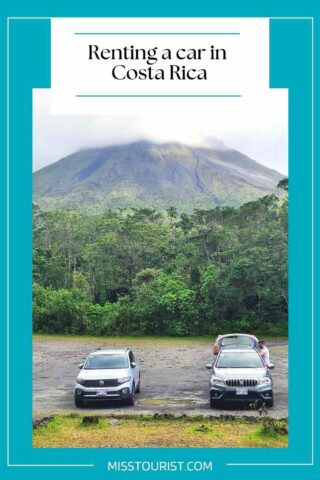
Pin it for later!
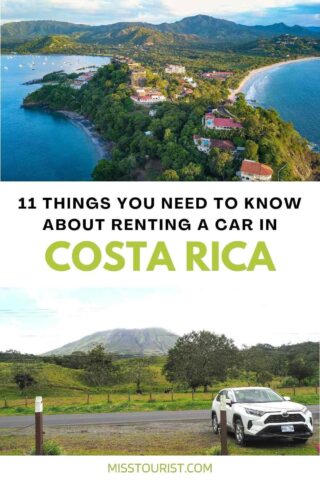
[ad_2]
Source link
